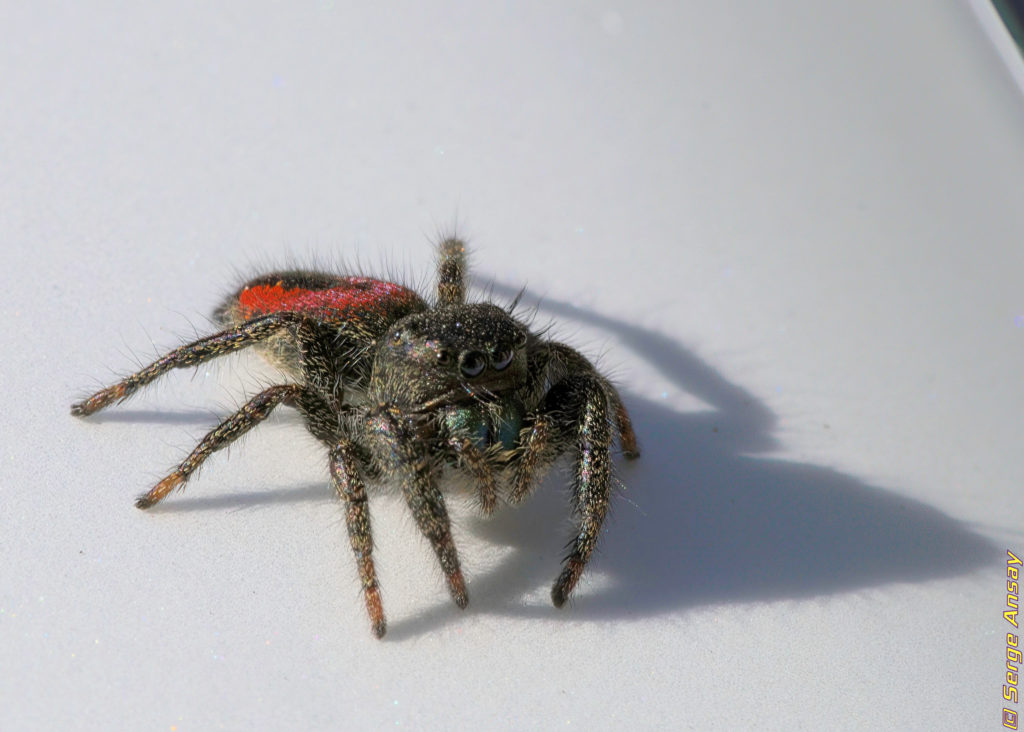Today we have a petite Johnson jumping spider, scientific named “Phidippus johnsoni“, this spider is also known as “red-backed jumping spider”. The reason for the alternate name is obvious in the specimen I caught in my camera in September of last year. I have been wanting to show you this little creature for a long time, but there seem to always be some other creatures or reports which seemed more important at the time. So many interesting creatures out there, so little time.
This spider appeared one day on the hood of my wife’s car which was parked on our driveway. I had just stepped outside, saw it and ran back inside to get my camera. I had never seen such a spider since I arrived in this country in 1985, and I have never seen one again since. Even so, the articles I read indicate that this is a pretty common spider at least in California, Northern America.
This is a female. It is easy to differentiate with the male because it has a black central stripe separating red on its abdomen, whereas the male is all red. It’s a very small spider, only 10 millimeters (0.4 inches). I regret that at the time I did not think of adding something in the picture to give a sense of scale. It is smaller than a penny (19 mm). But this little spider can actually jump 5 times its length.
The Johnson jumping spider does not build a web to catch its prey. Instead, it roams around, jumping on insects it can find on its way, such as flies, moth, caterpillars, and even other spiders. Like all spiders, they have 8 eyes. Four of them are tightly packed in the front, with 2 large ones which, according to this article , are able to judge distances by using a “defocus” system. These eyes have 4 layers of photoreceptors. Only the deepest one gets a focused image. The others are used to evaluate the distance by the amount of “defocus” they perceive. As you can see, nature found yet another way to provide that essential ability to this tiny creature. The other eyes are used to sense motion.
Another curious fact about this spider is found in the Wikipedia article: “In 2012, NASA sent an individual of this species into space”. You can read all about it in this article. But the short story is that it was sent to the ISS, where it lived and adapted to life in space during the 100 days of the mission. It kept doing its usual hunting of fruit flies and was returned to Earth safe and sound.




